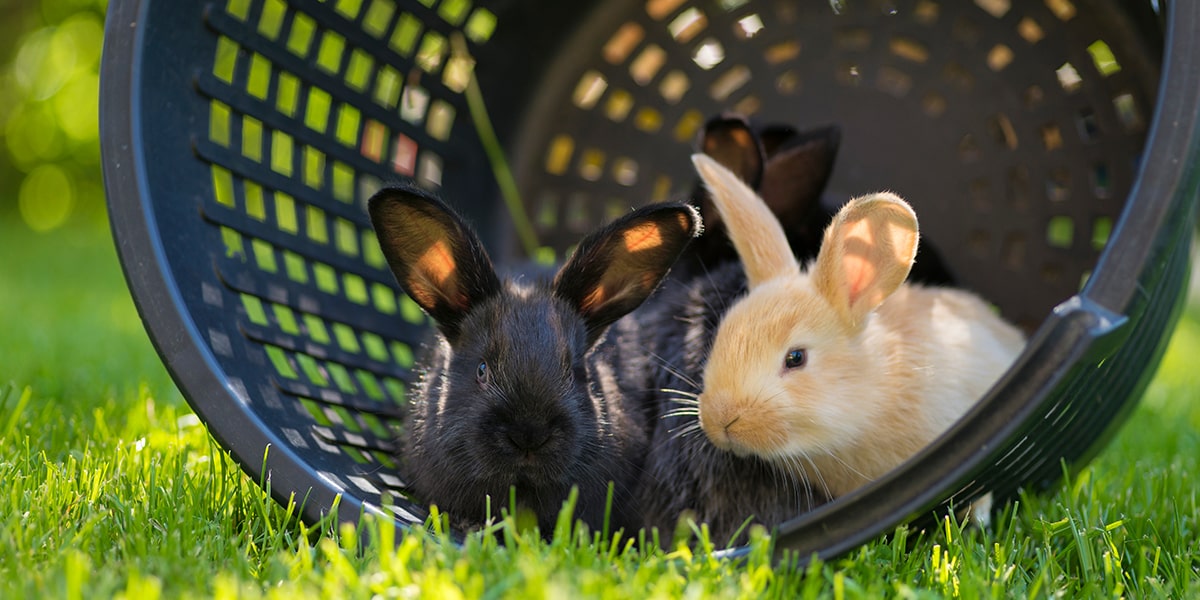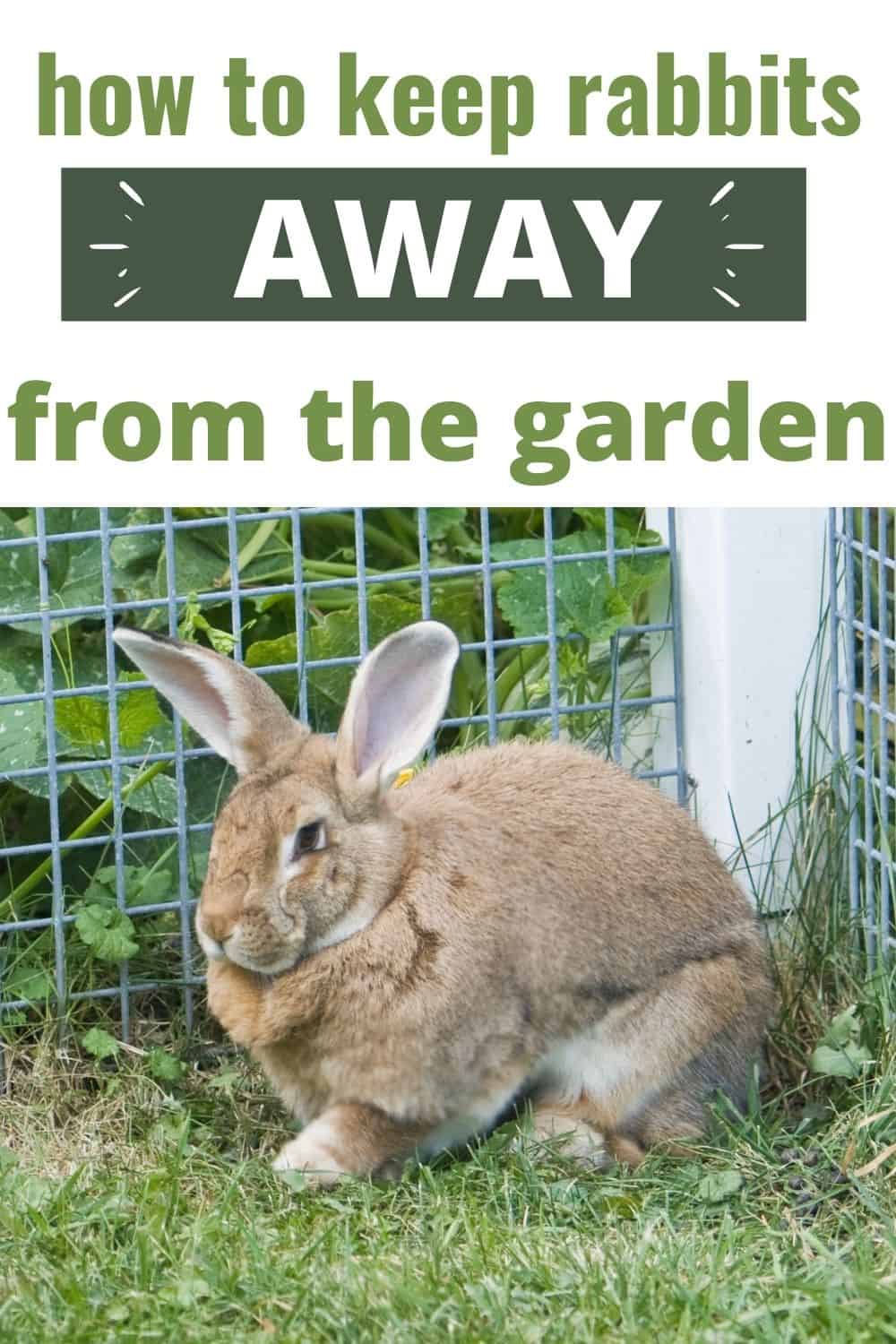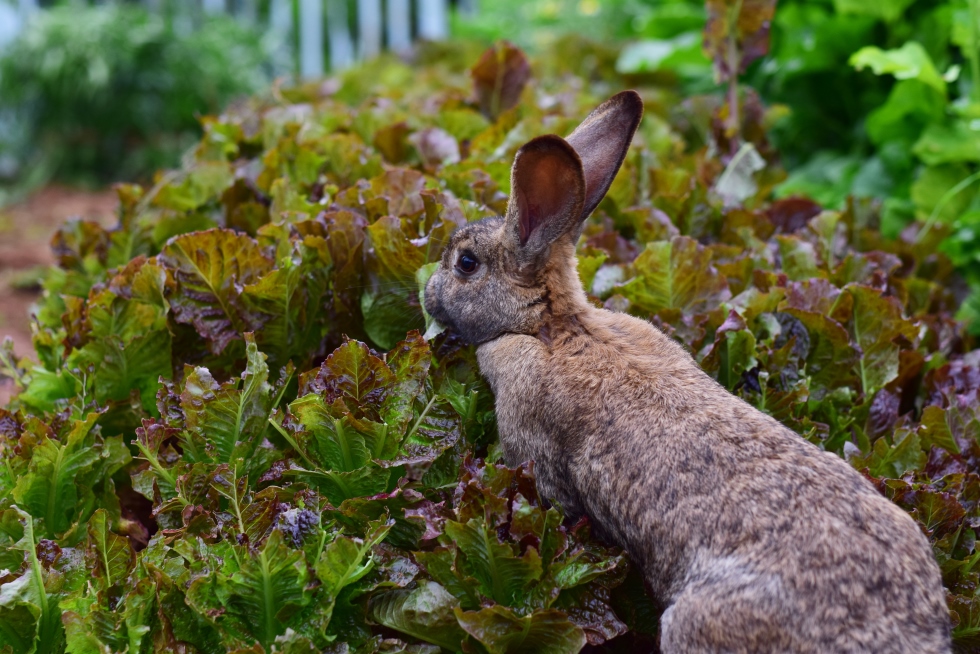Understanding the Attraction: Why Rabbits Love Your Garden
Rabbits are attracted to gardens for a variety of reasons, including the abundance of food, shelter, and water. These furry critters are herbivores, which means they primarily feed on plant-based materials, making gardens a paradise for them. They are particularly fond of plants with soft leaves, stems, and flowers, such as lettuce, peas, and marigolds. In addition to the types of plants, rabbits are also drawn to gardens with certain environmental factors, such as proximity to their burrows, availability of hiding spots, and ease of access.
To prevent bunnies from eating your garden, it’s essential to understand what attracts them in the first place. By knowing the types of plants they prefer and the environmental factors that draw them in, you can take steps to make your garden less appealing to these furry critters. For example, you can plant rabbit-resistant varieties or use repellents to deter them. Additionally, you can modify the layout of your garden to make it less accessible to rabbits.
Rabbits are also attracted to gardens with a mix of plants that provide them with a constant food source. They prefer gardens with a variety of plants that are easy to access and provide them with the nutrients they need to survive. By understanding these preferences, you can take steps to prevent bunnies from eating your garden. For instance, you can plant a mix of plants that are less appealing to rabbits or use physical barriers to prevent them from accessing your garden.
Furthermore, rabbits are also drawn to gardens with certain features, such as rocks, logs, and other hiding spots. These features provide them with a sense of security and protection from predators. By removing these features or making them less accessible, you can make your garden less appealing to rabbits.
By understanding why rabbits love your garden, you can take steps to prevent them from eating your plants and damaging your garden. This can include planting rabbit-resistant varieties, using repellents, and modifying the layout of your garden to make it less appealing to rabbits. By taking these steps, you can enjoy a beautiful and thriving garden without the hassle of rabbit damage.
Rabbit-Proofing 101: Garden Design Strategies
When it comes to protecting your garden from hungry rabbits, a well-designed garden can be your best defense. By incorporating rabbit-repellent plants, physical barriers, and creating a rabbit-unfriendly landscape, you can prevent bunnies from eating your garden and reduce the risk of damage. In this section, we’ll explore some effective garden design strategies to help you rabbit-proof your garden.
One of the most effective ways to deter rabbits from your garden is to use rabbit-repellent plants. These plants are unappealing to rabbits and can be used to create a barrier around your garden. Some examples of rabbit-repellent plants include lavender, rosemary, and chamomile. By planting these species around the perimeter of your garden, you can create a natural deterrent that will keep rabbits away.
In addition to using rabbit-repellent plants, you can also incorporate physical barriers to prevent rabbits from accessing your garden. Fencing is a popular option, but it can be expensive and unsightly. A more effective and aesthetically pleasing option is to use a combination of plants and natural barriers, such as rocks or logs, to create a rabbit-proof border.
Another effective garden design strategy is to create a rabbit-unfriendly landscape. This can be achieved by using a mix of plants that are unappealing to rabbits, such as those with strong scents or bitter tastes. You can also use plants with dense foliage or thorns to create a physical barrier that will deter rabbits from entering your garden.
When designing your garden, it’s also important to consider the layout and accessibility. Rabbits prefer gardens with easy access and a clear path to food sources. By creating a garden with winding paths and dense plantings, you can make it more difficult for rabbits to navigate and reduce the risk of damage.
By incorporating these garden design strategies, you can create a rabbit-proof garden that will protect your plants and reduce the risk of damage. Remember to always use a combination of methods, as relying on a single strategy can be ineffective. By using a mix of rabbit-repellent plants, physical barriers, and creating a rabbit-unfriendly landscape, you can enjoy a beautiful and thriving garden without the hassle of rabbit damage.
Effective Deterrents: Using Repellents and Barriers
When it comes to preventing bunnies from eating your garden, using repellents and barriers can be an effective solution. There are many different types of repellents and barriers available, including commercial products and DIY solutions. In this section, we’ll explore some of the most effective deterrents you can use to keep rabbits out of your garden.
One of the most popular commercial repellents is Liquid Fence. This product is a spray that can be applied to plants to deter rabbits. It’s made from a combination of hot peppers and garlic, which are unappealing to rabbits. Liquid Fence is easy to use and can be applied directly to the plants you want to protect.
Another effective repellent is hot pepper spray. This DIY solution can be made by mixing hot peppers with water and spraying it on the plants you want to protect. Hot pepper spray is a natural and non-toxic way to deter rabbits from eating your garden.
In addition to repellents, physical barriers can also be used to prevent rabbits from accessing your garden. Fencing is a popular option, but it can be expensive and unsightly. A more effective and aesthetically pleasing option is to use a combination of plants and natural barriers, such as rocks or logs, to create a rabbit-proof border.
Row covers are another effective barrier that can be used to prevent rabbits from accessing your garden. Row covers are lightweight, porous fabrics that can be placed over plants to prevent rabbits from eating them. They’re easy to install and can be used to protect a variety of plants, including vegetables, fruits, and flowers.
When using repellents and barriers, it’s essential to remember that they should be used in combination with other deterrent strategies. Relying on a single method can be ineffective, as rabbits can become accustomed to a particular repellent or barrier over time. By using a combination of methods, you can create a comprehensive deterrent strategy that will keep rabbits out of your garden for good.
By incorporating repellents and barriers into your garden design, you can prevent bunnies from eating your garden and reduce the risk of damage. Remember to always use a combination of methods and to regularly inspect your garden for signs of rabbit damage. With the right deterrent strategies in place, you can enjoy a beautiful and thriving garden without the hassle of rabbit damage.
Cover Cropping: A Simple yet Effective Solution
Cover cropping is a simple yet effective solution to prevent rabbits from eating your garden. Cover crops are plants that are specifically grown to protect and enrich the soil, and they can also serve as a barrier to keep rabbits out. By planting cover crops in your garden, you can create a physical barrier that will prevent rabbits from accessing your plants.
There are many different types of cover crops that can be used to prevent rabbits from eating your garden. Some of the most effective cover crops include clover, rye, and oats. These crops are all easy to grow and can be planted in the fall or early spring. They will grow quickly and provide a dense cover that will prevent rabbits from accessing your plants.
Another benefit of cover cropping is that it can help to improve the soil quality in your garden. Cover crops have deep roots that can help to break up compacted soil and bring up nutrients from the subsoil. This can help to create a healthier and more productive garden, which will be less appealing to rabbits.
To plant cover crops in your garden, simply till the soil and broadcast the seeds. You can also use a drill or planter to plant the seeds in rows. Make sure to plant the cover crops at the right time of year for your climate, and water them regularly to ensure they grow well.
By using cover crops to prevent rabbits from eating your garden, you can create a simple and effective barrier that will protect your plants. This method is also environmentally friendly and can help to improve the soil quality in your garden. By incorporating cover crops into your garden design, you can enjoy a beautiful and thriving garden without the hassle of rabbit damage.
Some other benefits of cover cropping include reducing soil erosion, increasing soil fertility, and providing a habitat for beneficial insects. By using cover crops in your garden, you can create a more sustainable and productive garden that will be less appealing to rabbits.
Row Covers: A Physical Barrier to Keep Rabbits Out
Row covers are a physical barrier that can be used to prevent rabbits from accessing your garden. These lightweight, porous fabrics can be placed over plants to prevent rabbits from eating them. Row covers are an effective way to keep rabbits out of your garden, and they can be used in conjunction with other deterrent methods.
There are several types of row covers available, including polypropylene and polyester. Polypropylene row covers are lightweight and breathable, making them ideal for use in warm weather. Polyester row covers are more durable and can be used in cooler weather. Both types of row covers are effective at keeping rabbits out of your garden.
To install row covers, simply drape them over the plants you want to protect. You can use hoops or stakes to hold the row covers in place. Make sure to cover the entire plant, including the leaves and stems, to prevent rabbits from accessing them.
Row covers are a simple and effective way to prevent rabbits from eating your garden. They are easy to install and can be used in conjunction with other deterrent methods. By using row covers, you can keep rabbits out of your garden and enjoy a bountiful harvest.
In addition to preventing rabbits from eating your garden, row covers can also help to prevent other pests from accessing your plants. They can be used to prevent deer, birds, and other small animals from eating your plants. Row covers are a versatile and effective way to protect your garden from pests.
When choosing row covers, make sure to select a type that is suitable for your climate and the type of plants you are growing. Polypropylene row covers are ideal for warm weather, while polyester row covers are better suited for cooler weather. By selecting the right type of row cover, you can ensure that your garden is protected from rabbits and other pests.
Planting Rabbit-Resistant Varieties
One of the most effective ways to prevent rabbits from eating your garden is to plant rabbit-resistant varieties. These plants are naturally unappealing to rabbits and can help to deter them from your garden. By incorporating rabbit-resistant plants into your garden design, you can create a beautiful and thriving garden that is less appealing to rabbits.
There are many different types of plants that are naturally resistant to rabbit damage. Some examples of rabbit-resistant flowers include marigolds, zinnias, and petunias. These flowers are all easy to grow and can add a pop of color to your garden. Rabbit-resistant vegetables include hot peppers, garlic, and onions. These vegetables are all easy to grow and can be used in a variety of dishes. Rabbit-resistant herbs include rosemary, thyme, and oregano. These herbs are all easy to grow and can be used to add flavor to a variety of dishes.
When planting rabbit-resistant varieties, it’s essential to choose plants that are suitable for your climate and soil type. Make sure to select plants that are disease-resistant and easy to care for. By choosing the right plants, you can create a beautiful and thriving garden that is less appealing to rabbits.
In addition to planting rabbit-resistant varieties, you can also use companion planting to deter rabbits from your garden. Companion planting involves planting different plants together to create a mutually beneficial relationship. For example, planting marigolds with tomatoes can help to deter nematodes, which can harm tomatoes. By using companion planting, you can create a healthy and thriving garden that is less appealing to rabbits.
Some other tips for planting rabbit-resistant varieties include using a mix of plants that are unappealing to rabbits, incorporating physical barriers, and creating a rabbit-unfriendly landscape. By using these tips, you can create a beautiful and thriving garden that is less appealing to rabbits.
By incorporating rabbit-resistant plants into your garden design, you can create a beautiful and thriving garden that is less appealing to rabbits. Remember to choose plants that are suitable for your climate and soil type, and use companion planting to create a mutually beneficial relationship. With the right plants and a little creativity, you can keep rabbits out of your garden for good.
Using Scarecrows and Other Visual Deterrents
Scarecrows and other visual deterrents can be an effective way to scare rabbits away from your garden. These visual deterrents work by creating a sense of fear or unease in the rabbits, causing them to avoid the area. By using scarecrows and other visual deterrents, you can create a rabbit-free zone in your garden.
One of the most common types of scarecrows is the traditional straw-stuffed scarecrow. These scarecrows are easy to make and can be placed in strategic locations around your garden. You can also use other materials, such as old clothes or plastic bags, to create a scarecrow.
In addition to scarecrows, there are other visual deterrents that can be used to scare rabbits away from your garden. These include shiny reflective surfaces, such as aluminum foil or CDs, and motion-activated sprinklers. These visual deterrents can be placed around the perimeter of your garden to create a barrier that rabbits will not want to cross.
When using scarecrows and other visual deterrents, it’s essential to place them in strategic locations around your garden. Rabbits are creatures of habit and tend to follow the same paths when they are foraging for food. By placing scarecrows and other visual deterrents in these areas, you can create a sense of fear or unease in the rabbits, causing them to avoid the area.
It’s also important to note that scarecrows and other visual deterrents should be used in conjunction with other methods of rabbit control. These methods can include using repellents, planting rabbit-resistant varieties, and creating a rabbit-unfriendly landscape. By using a combination of methods, you can create a comprehensive rabbit control strategy that will keep rabbits out of your garden for good.
Some other tips for using scarecrows and other visual deterrents include moving them regularly to create the illusion of movement and using a variety of different visual deterrents to keep the rabbits guessing. By using these tips, you can create a rabbit-free zone in your garden and enjoy a bountiful harvest.
Maintenance and Monitoring: Keeping Rabbits Out for Good
Regular maintenance and monitoring are crucial to keeping rabbits out of your garden for good. By regularly inspecting your garden for rabbit damage and adjusting your deterrent strategies as needed, you can ensure that your garden remains rabbit-free.
One of the most important things to monitor is the effectiveness of your deterrent strategies. If you notice that rabbits are still getting into your garden, it may be necessary to adjust your strategies or try new ones. For example, if you’re using repellents, you may need to reapply them regularly or try a different type of repellent.
In addition to monitoring the effectiveness of your deterrent strategies, it’s also important to inspect your garden regularly for rabbit damage. Look for signs of rabbit activity, such as droppings, gnaw marks, and torn plants. If you notice any of these signs, it’s likely that rabbits are still getting into your garden.
Another important aspect of maintenance and monitoring is to keep your garden clean and free of debris. Rabbits are attracted to gardens with plenty of hiding spots and food sources, so keeping your garden clean and tidy can help to deter them. Remove any weeds, debris, or fallen fruit or vegetables, and keep your garden beds well-maintained.
Finally, it’s essential to be proactive in your rabbit control efforts. Don’t wait until rabbits have already gotten into your garden to take action. Instead, take steps to prevent them from getting in in the first place. By regularly inspecting your garden and adjusting your deterrent strategies as needed, you can keep rabbits out of your garden for good.
Some other tips for maintenance and monitoring include keeping a garden journal to track your progress and note any changes in rabbit activity, and using a combination of deterrent strategies to keep rabbits out. By following these tips, you can keep your garden rabbit-free and enjoy a bountiful harvest.


/173643497-56a34a465f9b58b7d0d14e82.jpg)




